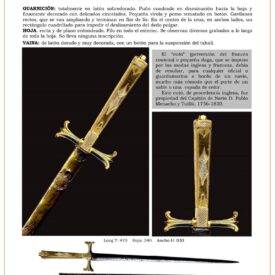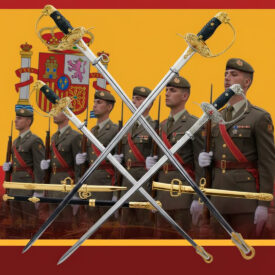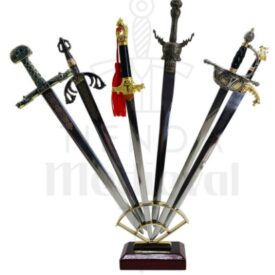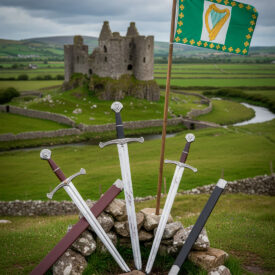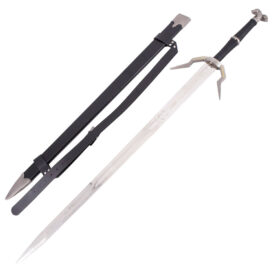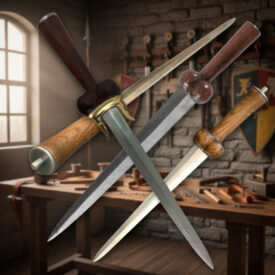“`html
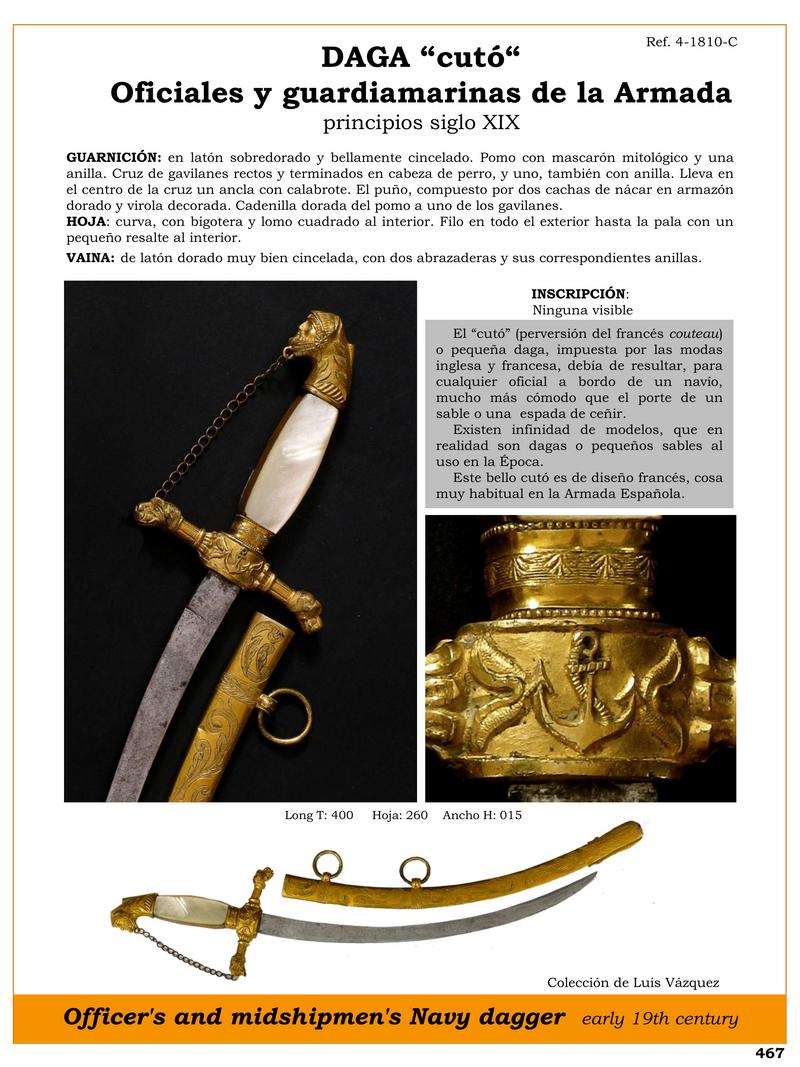
ENCYCLOPEDIA OF SPANISH SWORDS
OFFICERS AND MIDSHIPMEN CUT DAGGER OF THE NAVY EARLY 19TH CENTURY. Author: Vicente Toledo Momparler (sword expert)
| Reference | 4-1810-C |
|---|---|
| Name | DAGGER “cutó” |
| Era | Early 19th century |
| Guard | In gilded brass and beautifully engraved. Pommel with a mythological mask and a ring. Cross with straight quillons ending in dog heads, and one also with a ring. The center of the cross has an anchor with a shackle. The grip is composed of two mother-of-pearl scales in a gilded frame and a decorated ferrule. A golden chain connects the pommel to one of the quillons. |
| Blade | Curved, with a false edge and a square spine on the inside. Sharp on the entire exterior up to the blade with a small rise on the inside. |
| SCABBARD | Made of well-engraved gilded brass, with two mounts and their corresponding rings. |
| Inscription | None visible |
| Description | The “cutó” (a derivation of the French word “couteau”) or small dagger, influenced by English and French fashions, was much more convenient for any officer on board a ship than carrying a sabre or a sword. There are countless models, which are essentially daggers or small sabres used during that era. This beautiful cutó has a French design, which was quite common in the Spanish Navy. |
| Total Length | 400 mm |
| Blade | 260 mm |
| Width | 15 mm |
| Collection | Collection of Luis Vázquez |
. “`
